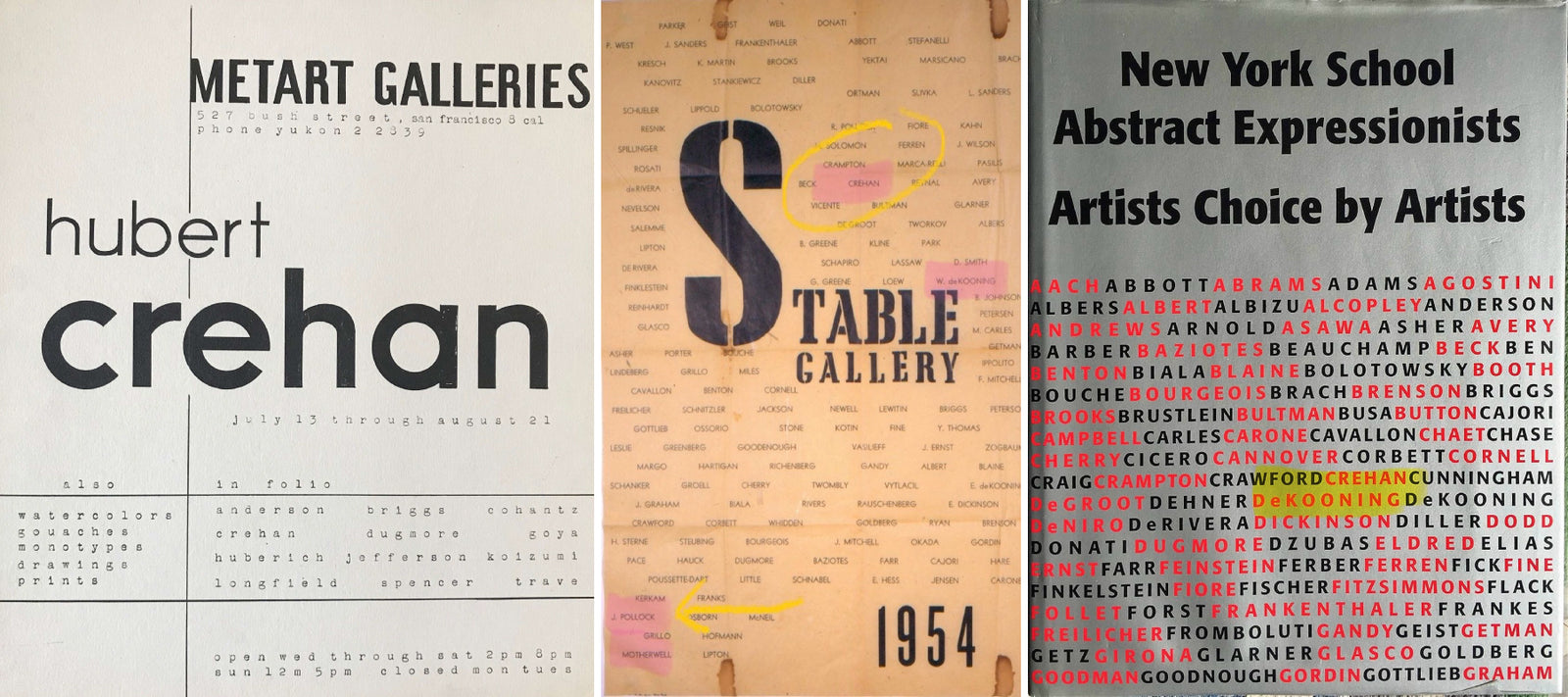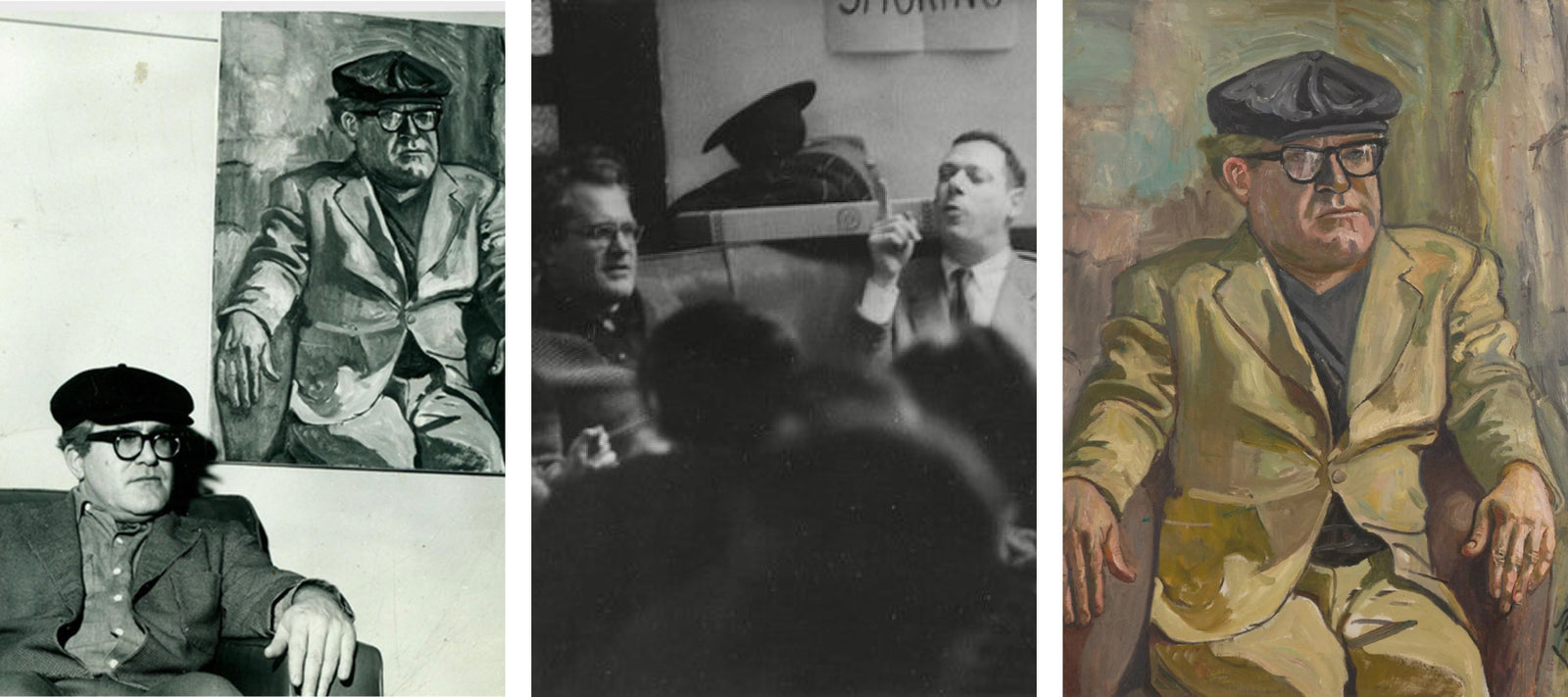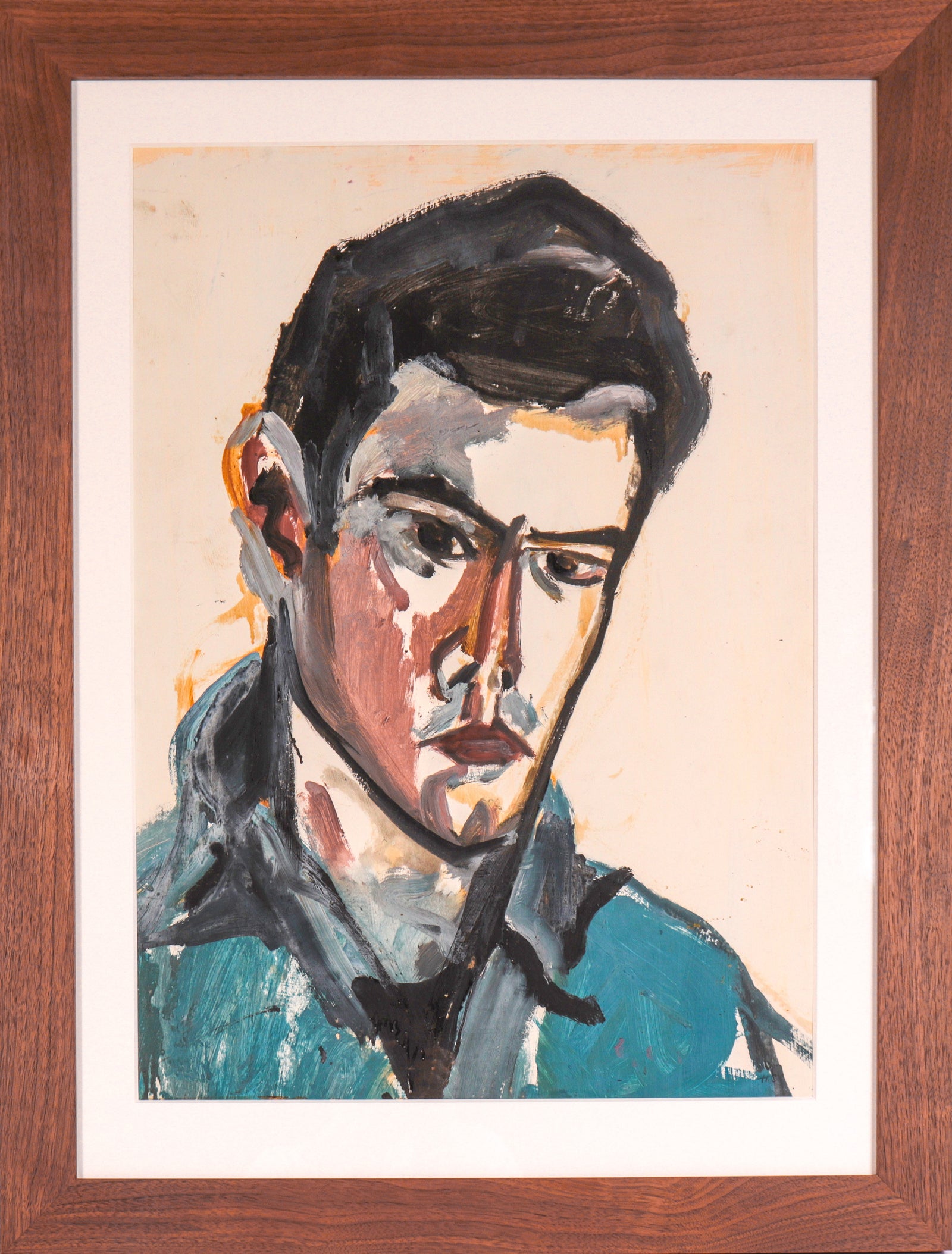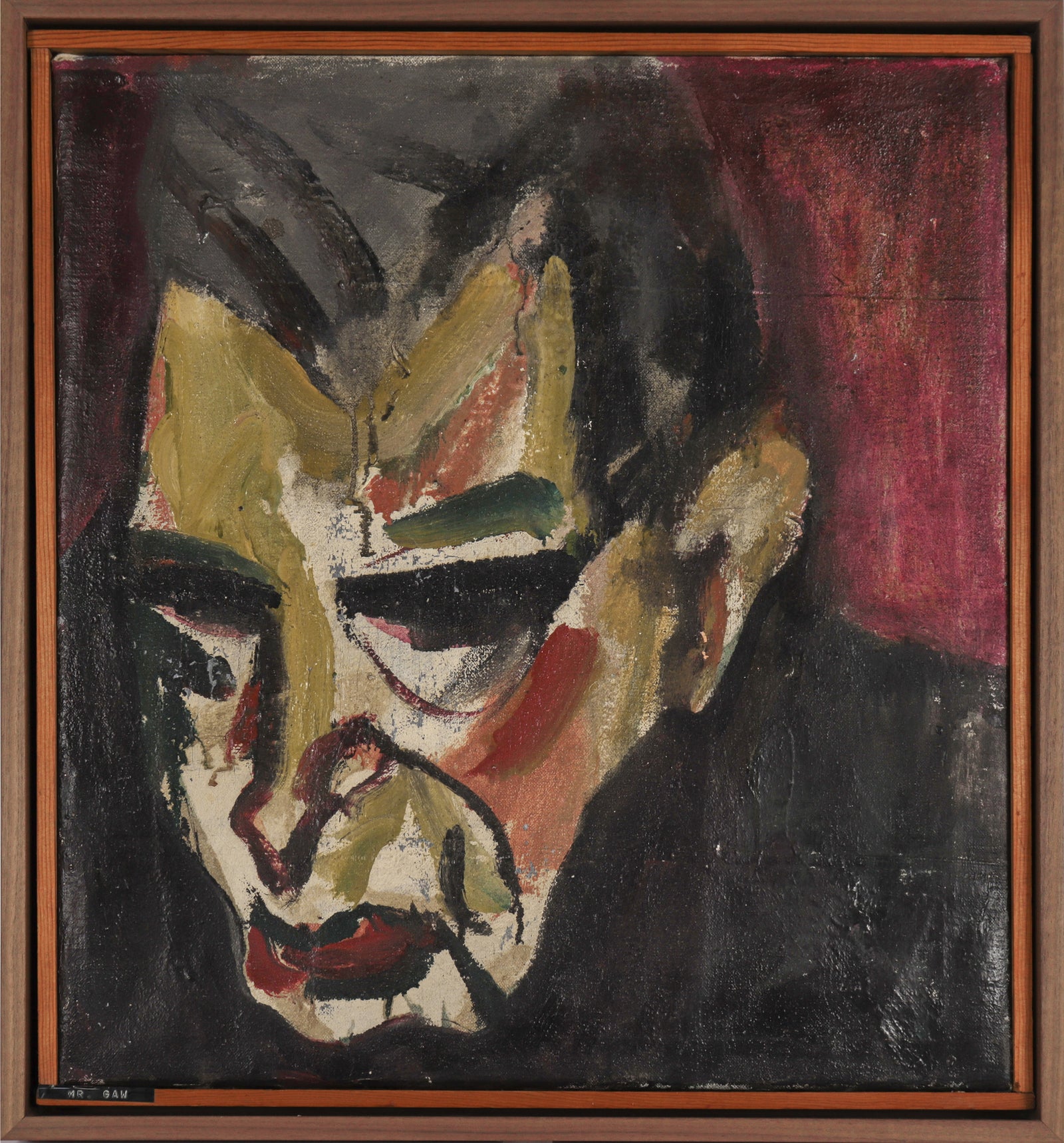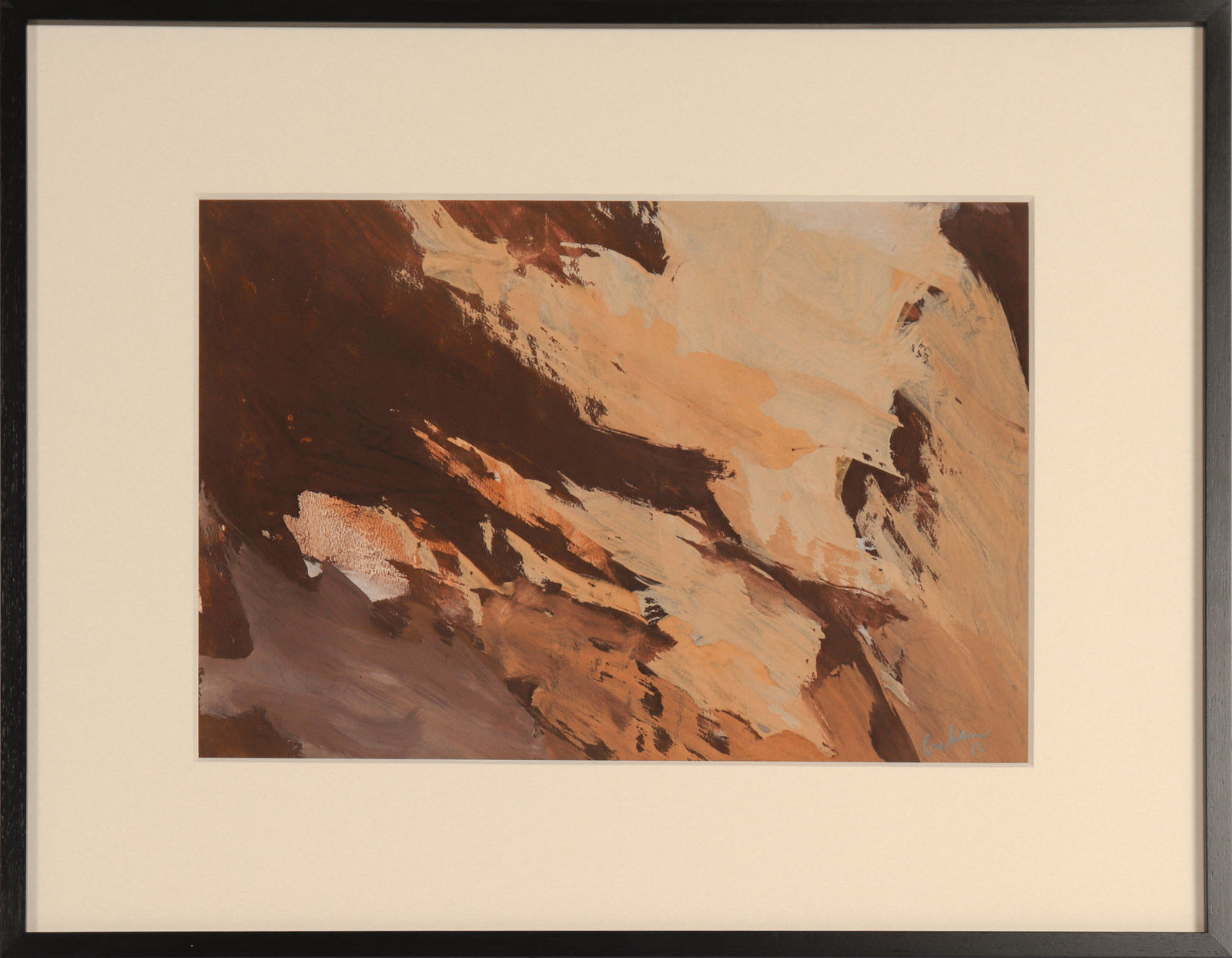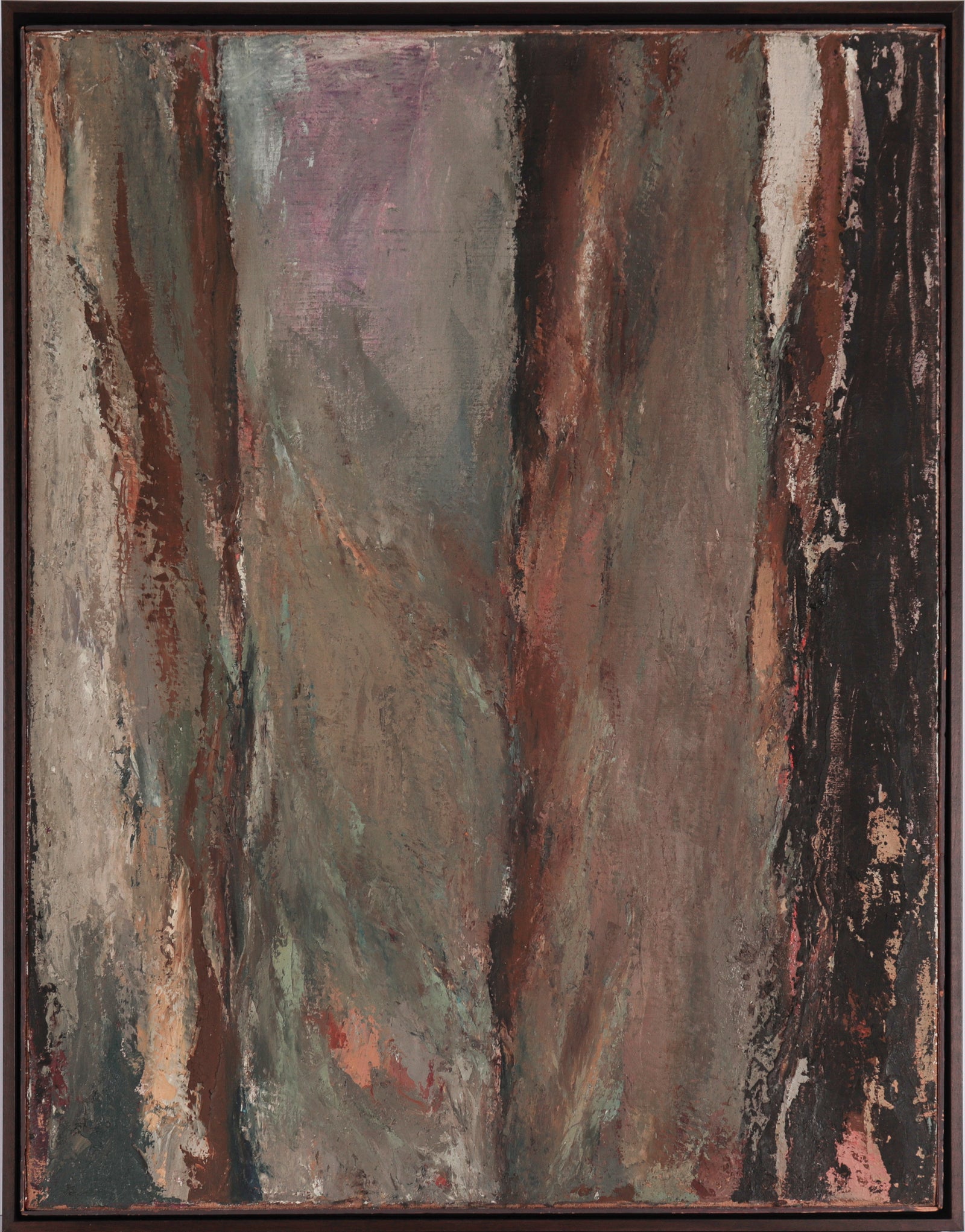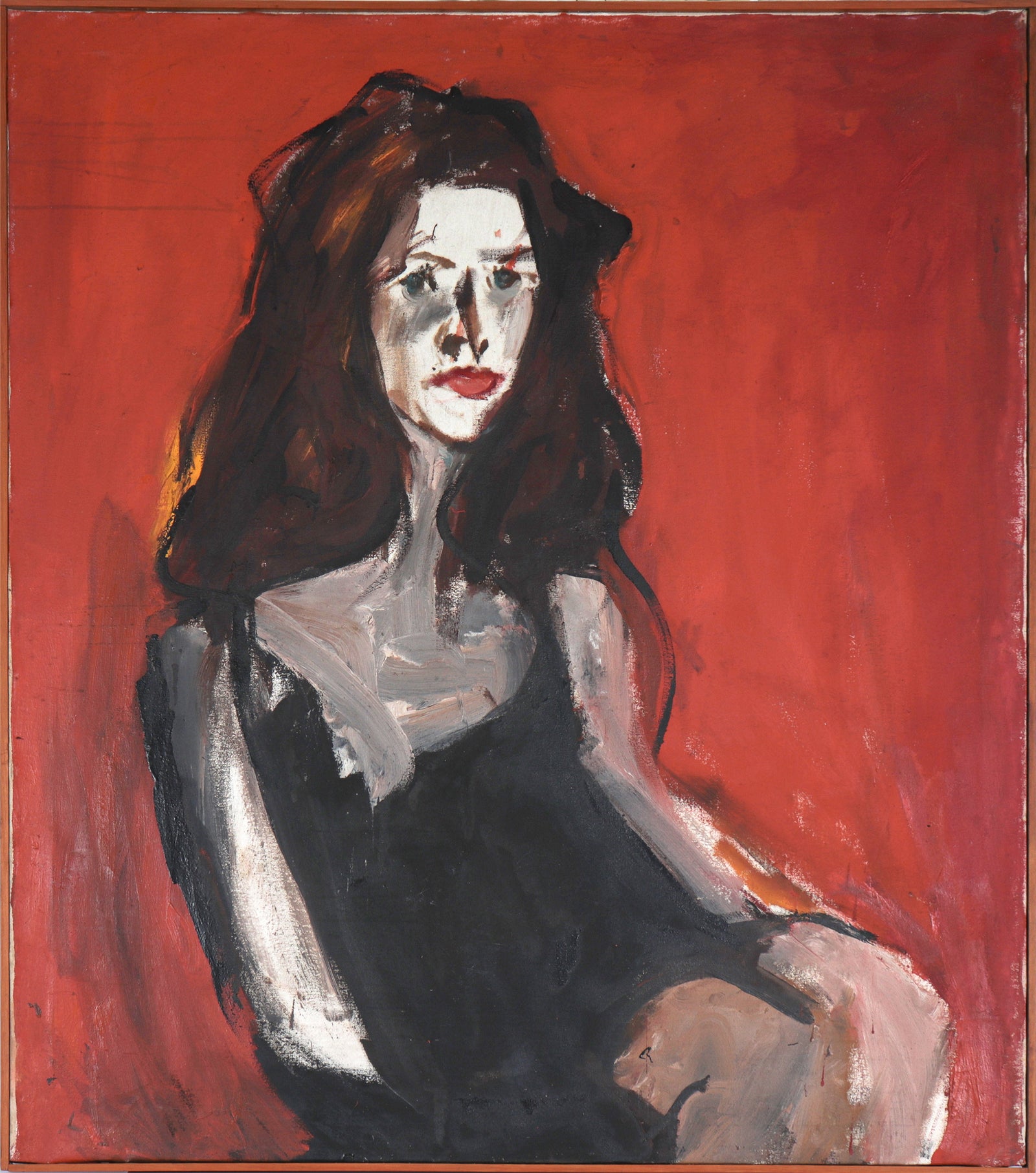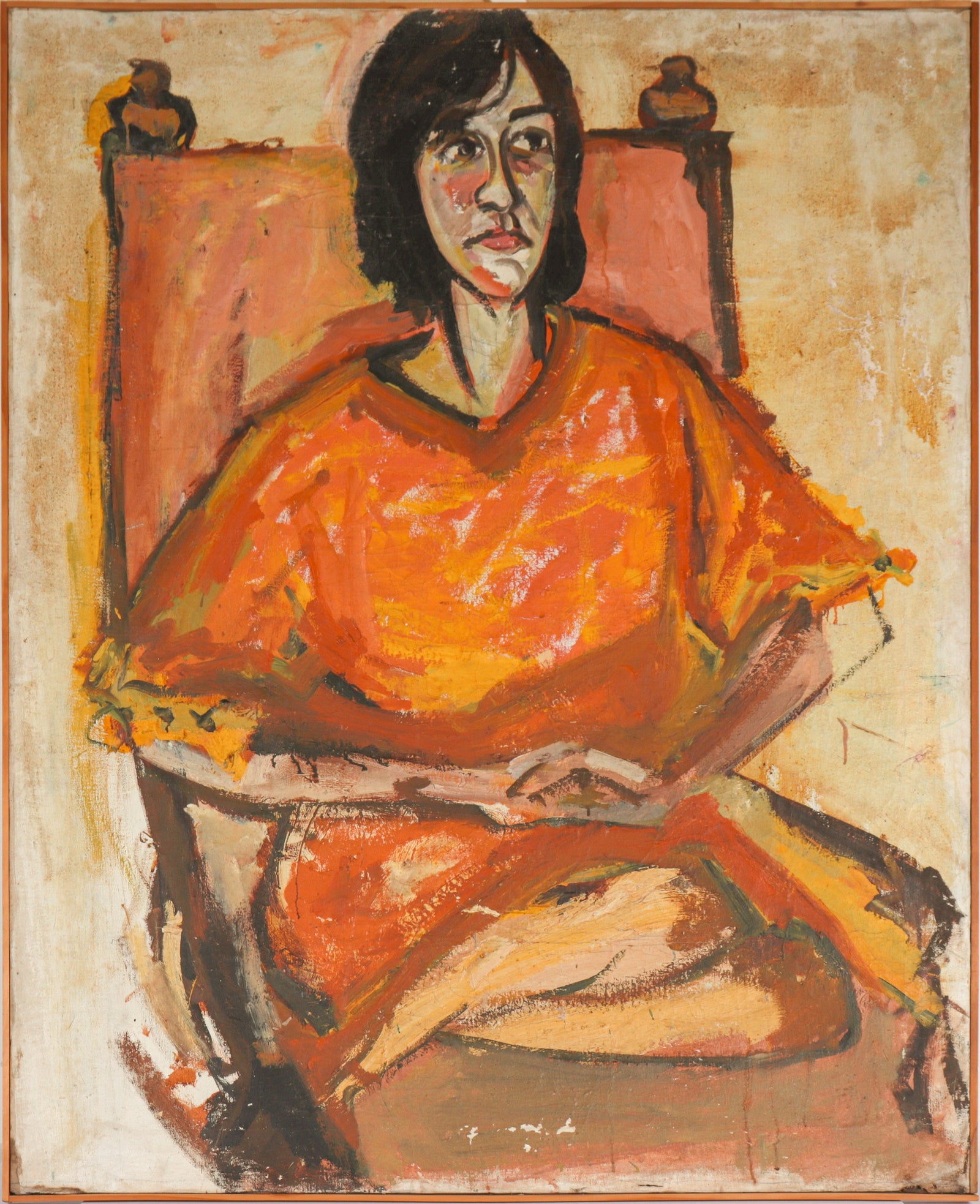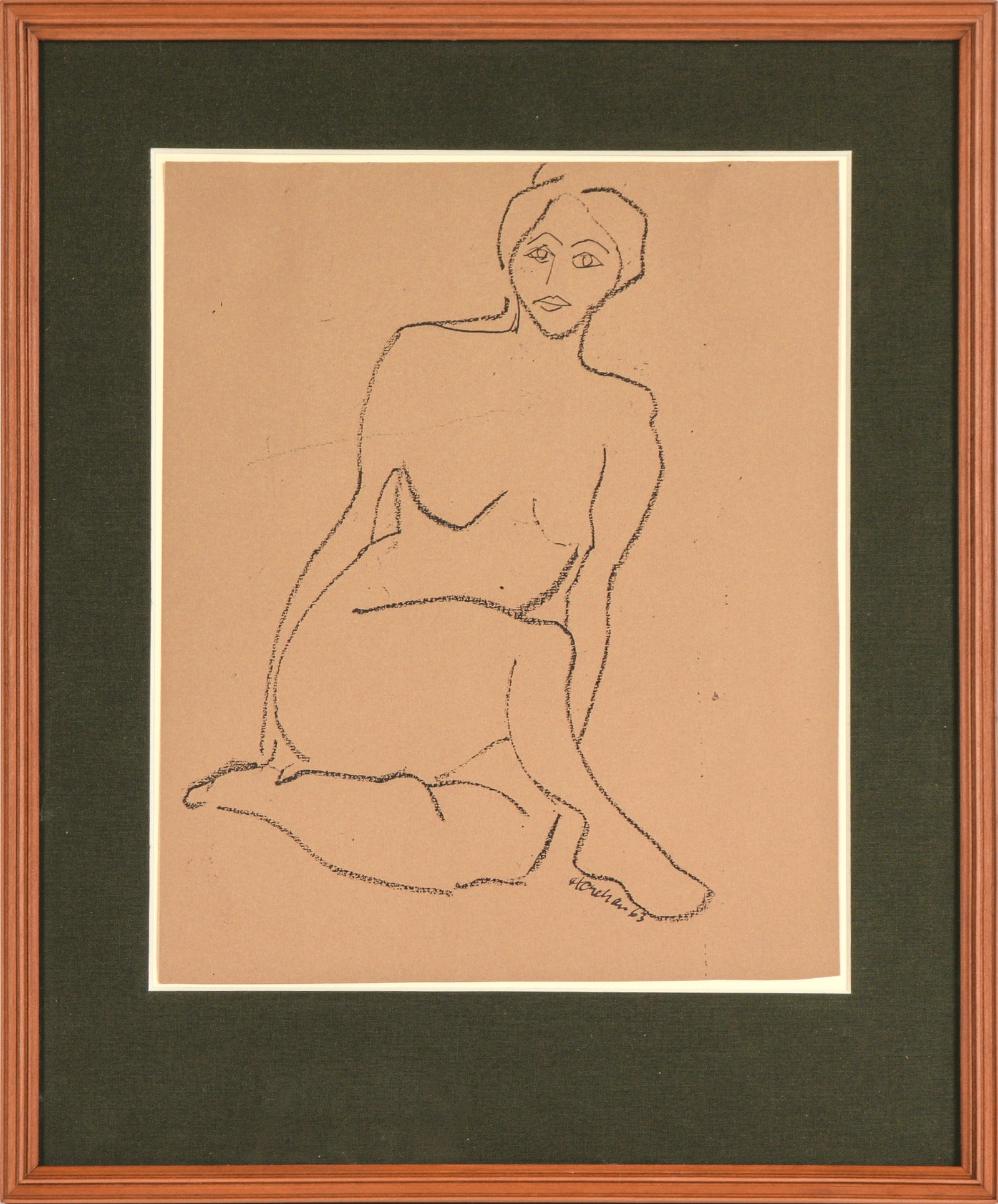Explore | Collect | Design
Bay Area Abex/Figurative Painter and Critic
Hubert Vincent Crehan (1917-1984) studied under Clyfford Still and Mark Rothko in San Francisco at the California School of Fine Arts (also known as SFAI) in the late 1940s. He was closely mentored by Still during those two years. Soon after graduating, he moved to New York and exhibited alongside Jackson Pollock, Willem de Kooning, and Robert Motherwell at the now legendary 1954 Exhibition of Painting and Sculpture at the Stable Gallery. In the 1960s, his second career as an art critic reached its zenith as he interviewed and reviewed shows for Marcel Duchamp, Robert Rauschenberg, and Willem de Kooning, among many others. His friendship with Alice Neel resulted in a portrait she painted of him in 1961. Yet, in spite of all this, Hubert Crehan’s work has gone largely unseen for the past sixty years. At some point in the 1960s, his focus shifted to a more reliable career for a family man—reviewing art for the leading magazines of the day—and his canvases were rolled up and shipped back to family in California, not to be seen again until now.
Hubert Crehan first enters the history of Bay Area art in 1949 when he and eleven other students of Clyfford Still (including Jeremy Anderson, Ernest Briggs, Zoe Longfield, Jack Jefferson, and Jorge Goya) started Metart Gallery (short for Metaphysical Art), a co-op designed to feature each member for a month at a time. In their opening ‘manifesto,’ the group declared that the gallery “was formed in direct response to the problem of bringing the work of the creative artist to public attention under conditions which leave the artist free from outside control.” The gallery was situated at 527 Bush Street near the entrance to Chinatown. Crehan had a solo exhibition for one month, and Clyfford Still closed the fifteen month life of the gallery with a bang when he provided an exhibition of his latest work. Opening in October 1950, the exhibition revealed that Still's work had changed considerably since his last San Francisco show at the Legion of Honor in 1947.
Here is how the Chronicle reviewed Crehan’s Metart Gallery exhibition: San Francisco Chronicle, July 24, 1949 by Alfred Frankenstein: “Crehan has obviously been studying with Clyfford Still at the California School of fine Arts., and many-not all - of his paintings at the Metart Gallery follow that artist very closely, down to and including his way of twisting a paint-laden brush across otherwise empty canvas. But Crehan also has an effervescent sense of color which is quite different from that exposed by any member of the Still school whose work I have seen, and while he belongs to the abstract-expressionist tradition, he uses its methods toward brighter and less tormented ends than is usual with this group. The formal cliches, almost all of them use, are likewise absent here, even including that half-moon shape horizontally placed and supported by a long, spindly triangle which seems to be a kind of password among painters. There is very little fumbling in Crehan's show, but I especially liked those pictures in which his gifts of color are most fully exhibited like Nos. 2, 8, 9, 15, 17 and 19.”
Hubert Crehan’s early, grand Abstract Expressionist canvases showed a deep devotion to the “all-over” painting approach of Still and Rothko. They radiated a daring play of color and composition that constantly challenged the eye to roam and search the canvas. After he moved to New York, his work was soon recognized and rewarded by the legendary gallerist Eleanor Ward and her Stable Gallery in Manhattan. Stable gave Crehan his first solo exhibit outside of San Francisco in 1953 (later that year, the gallery would hold a joint exhibit of Cy Twombly and Robert Rauschenberg). A few years later, one of Crehan’s large Abstract Expressionist paintings was reviewed as one of the highlights of the 77th Annual Exhibition of Painting and Sculpture at the SF Museum of Art (now SFMOMA). SF critic Alfred Frankenstein described his work as “distinguished for the richness of color, the sumptuosity of their tactile appeal, the vigor of their movement, and the boldness of their forms.”
From 1961 to 1962, Crehan was the Artist in Residence at Reed College in Oregon. There, he curated shows for New York artists such as Louise Nevelson and Alice Neel and expressed a particular desire to highlight female modernists. He also praised Neel in his work for national art publications. This connection developed into a friendship and a devotion to her work. Subsequently, Crehan moved to a figurative/portrait style that clearly reflected Neel’s deep influence. Neel said in an interview, “I converted him from being a follower of Clyfford Still to being a follower of me.” Neel was known for her portraits of everyday people and children. Crehan did the same, often painting portraits of his own young children, Sasha and Titus—several of which are in the Lost Art Salon collection.
As a critic and reviewer, Crehan was managing editor of Arts Magazine and associate editor of Art News from 1957 to 1960 and wrote frequently for Arts Digest. He wrote several highly influential reviews about the direction of modern art and essays on contemporary artists of the time. His writing is still referenced today, particularly his article “Is there a Pacific School of Art?” (1956), which addressed whether the art of the Bay Area could be classified under a prevailing style. Christie’s auction catalogs often quote his articles on Mark Rothko. A vast number of American museums hold his letters, essays, and recorded interviews (including his participation in a seminal panel discussion on "New Directions in American Painting and Sculpture" in 1960). Crehan also wrote for “It Is” and “Evergreen,” two counterculture arts publications in the 1960s.
Hubeft Crehan also attended UCLA (1945-48) , Stanford University (1948-1950), and the University of Guadalajara, Mexico (1951-1952). Crehan was married to Anne Seelye, and they had two children, Sasha and Titus. In 1984, Crehan passed away in Berkeley, CA.
We would like to express our gratitude to Hubert’s daughter, Sasha, and his niece, Kerry Dahm, for bringing his collection and story to us.


